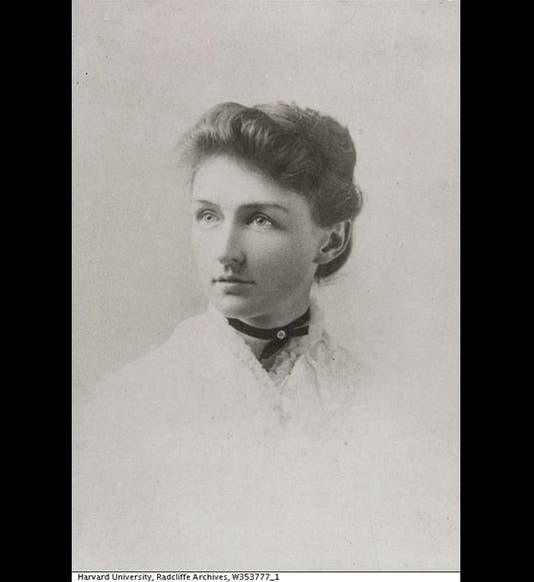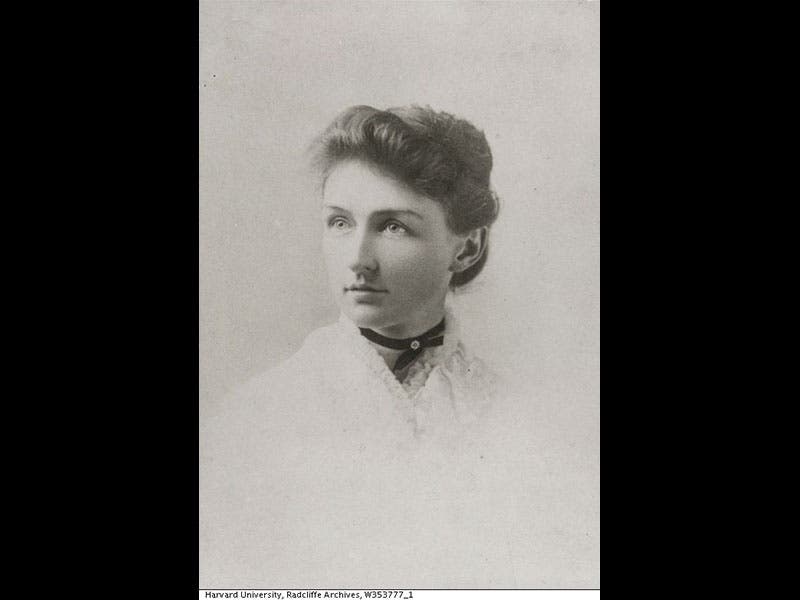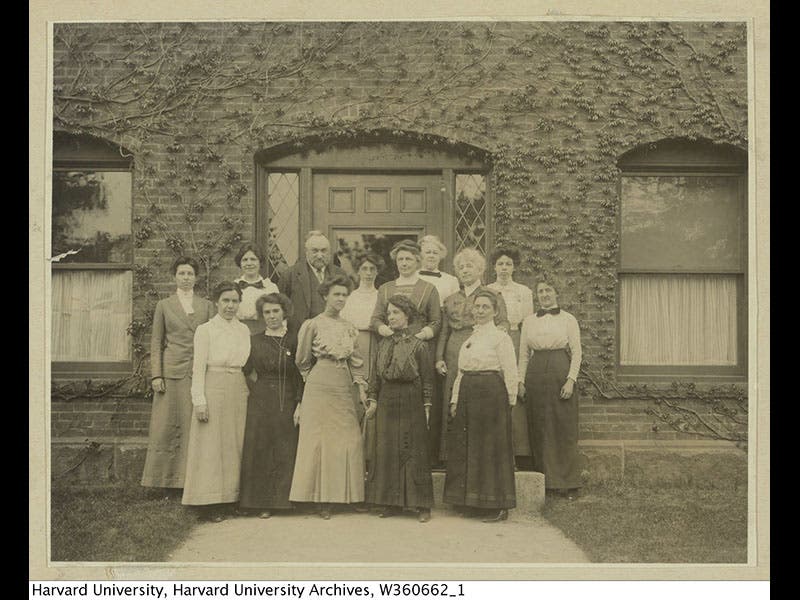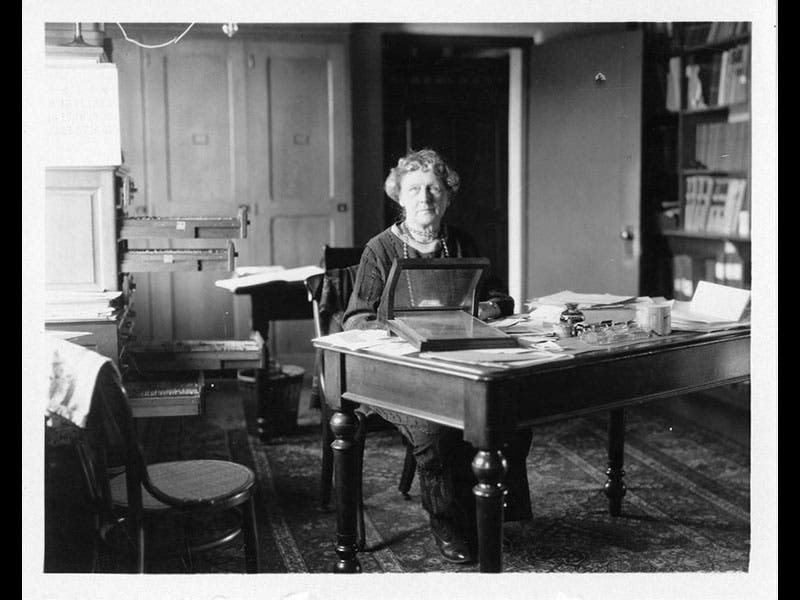Scientist of the Day - Annie Jump Cannon
[/imagetab]
Annie Jump Cannon, an American astronomer, was born Dec. 11, 1863. Cannon graduated from Wellesley College in Massachusetts in 1884, majoring in physics, and returned to her home in Delaware. After her mother died in 1894, she went back to Wellesley as a post-graduate assistant, now studying astronomy and spectroscopy. She also began taking courses at Radcliffe, so that she could use the telescopes at Harvard, and in 1896, she was conscripted into a group known as the “Harvard computers”--a coterie of women hired by Edward Pickering, director of Harvard College Observatory, to undertake the Herculean task of classifying all the stars by their spectra. The stars were being sorted into groups with identifying letters “A”, “B”, “C”, etc. based on the strength of the hydrogen lines in their spectra. It was Cannon's bright idea to reorder the stars by a different criterion (which would later be identified as the star’s temperature). The reshuffling left us with the familiar OBAFGKM sequence of spectral types--familiar, that is, to anyone who has taken a course in astronomy (and had to memorize “Oh be a fine girl, kiss me” to remember the sequence”). Cannon herself classified over 225,000 stars in the period between 1912 and 1915, an amazing number, when one considers that the spectrum of each star had to be observed individually, with a magnifying loupe, on a glass photographic plate covered with thousands of stellar spectra. Cannon could classify stars at the rate of 3 per minute (this was her optimum rate--plates packed with stars slowed her down considerably), which means she spent some 75,000 minutes of her life analyzing photographs.
The photographs above show: Cannon in her student days at Radcliffe; a group shot of the Harvard computers in 1910—Cannon is the second woman to the right of Pickering (the only man in the photo), with the white stripes on her lapels; and Cannon working with one of the glass plates.
Dr. William B. Ashworth, Jr., Consultant for the History of Science, Linda Hall Library and Associate Professor, Department of History, University of Missouri-Kansas City. Comments or corrections are welcome; please direct to ashworthw@umkc.edu.







![Using an astrolabe to measure the depth of a well, woodcut in Elucidatio fabricae vsusq[ue] astrolabii, by Johannes Stöffler, 1513 (Linda Hall Library)](https://preview-assets-us-01.kc-usercontent.com:443/9dd25524-761a-000d-d79f-86a5086d4774/a998eb50-55d2-4a88-ace2-a50aa5fa86e7/Stoffler%201.jpg?w=210&h=210&auto=format&fit=crop)

